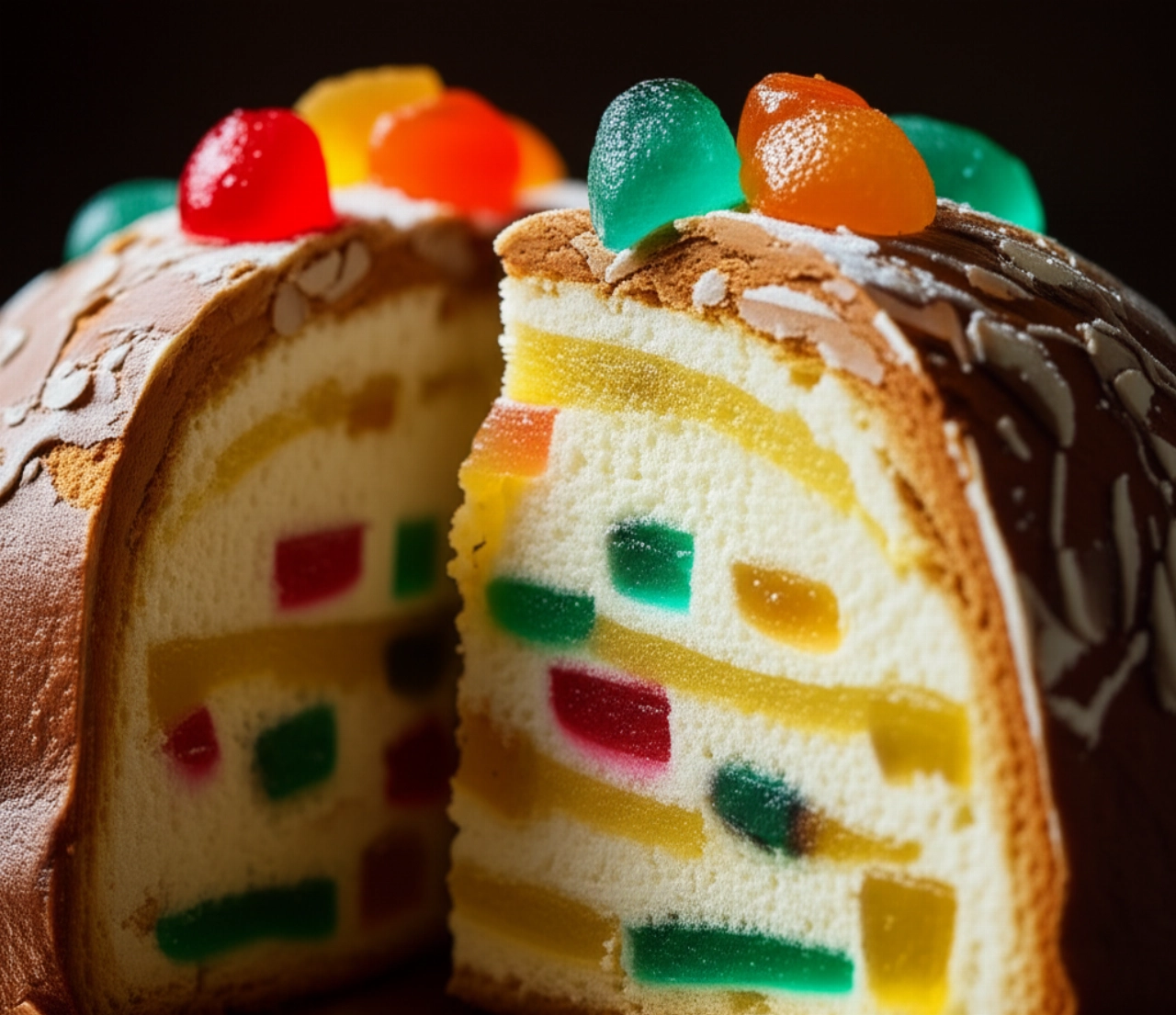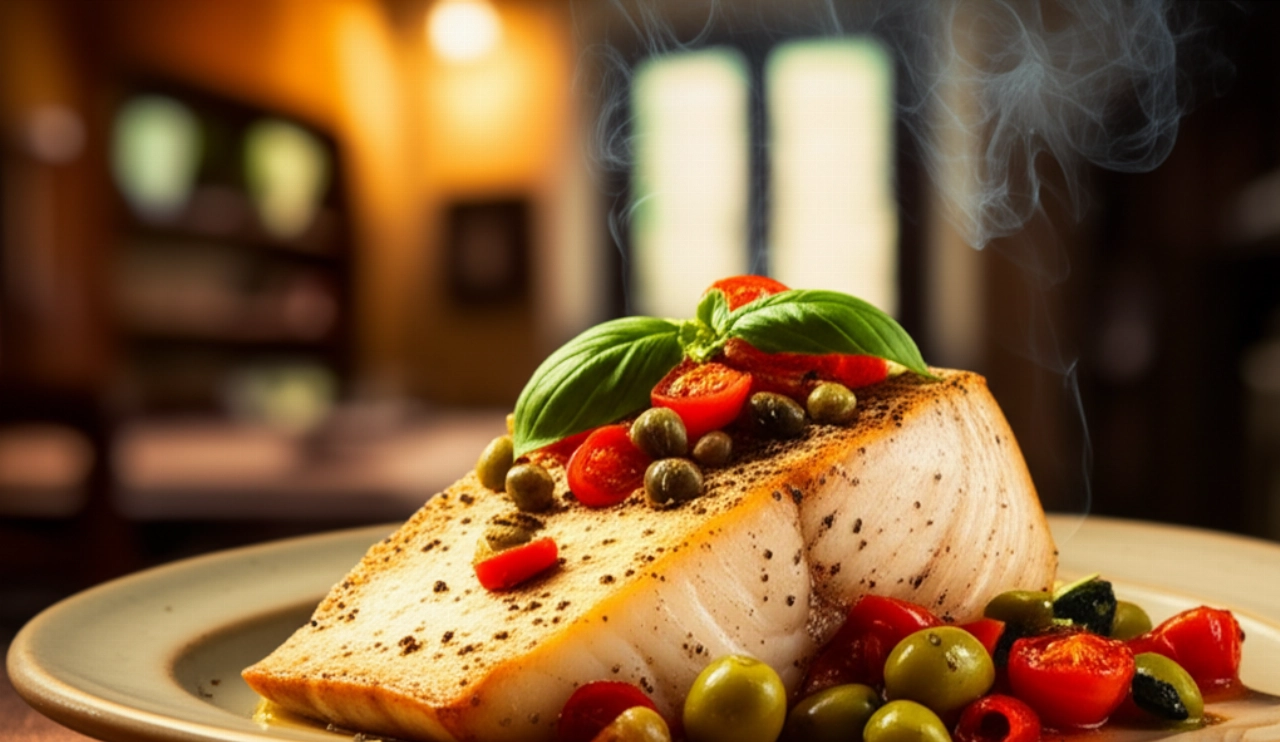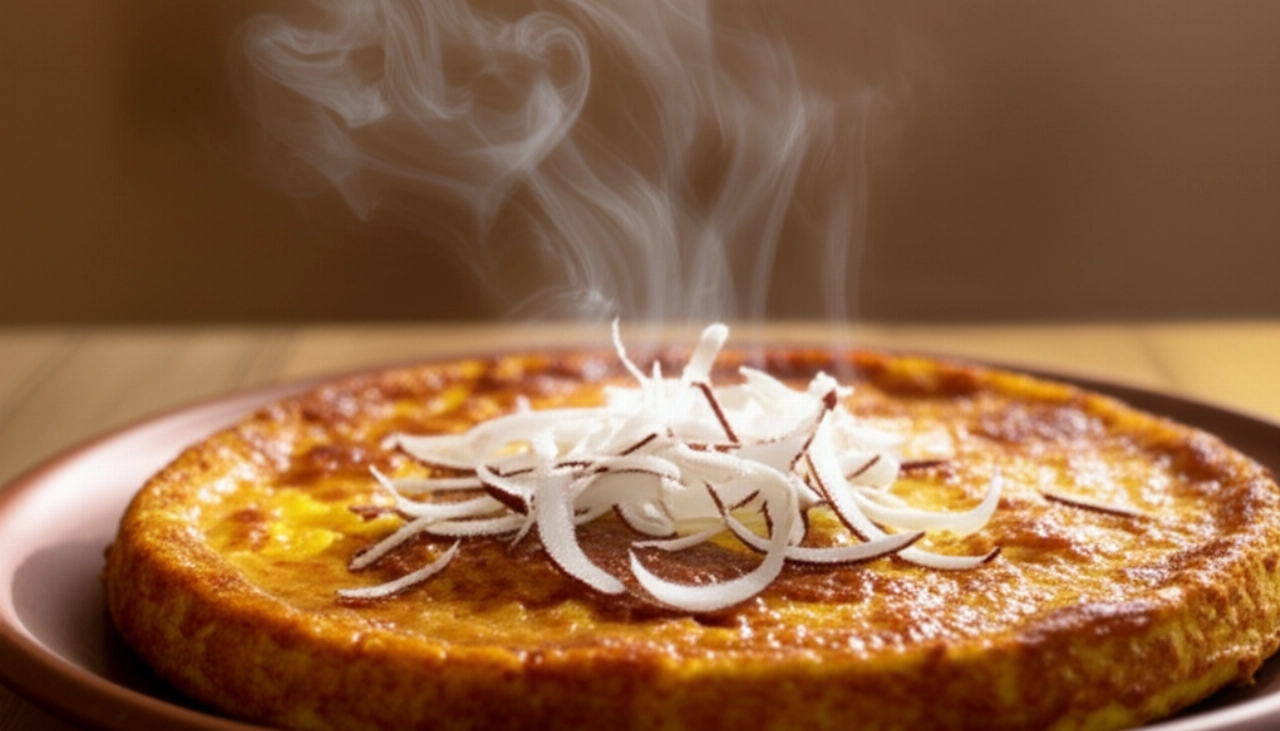Dreaming of bringing a piece of Sicily, fragrant with history and tradition, to your table? Imagine a dough so tall and fluffy it looks like a cloud, covered with a flavorful and irresistible topping. Palermitan Sfincione is not just a simple pizza; it's an experience, an embrace of flavors that transports you directly to the alleys of Palermo.
But how many times have you tried to make it at home and ended up with a flat, rubbery base, or one that lacked that authentic taste you remember? Finding the "true" recipe, one that makes you feel at home and guarantees an impeccable result, can seem like a challenge.
Make yourself comfortable. On this page, you won't just find a list of ingredients, but the definitive guide, full of tricks and tips, to prepare the tallest, fluffiest, and most flavorful Palermitan Sfincione of your life. Success is guaranteed, and the aroma in your home will be unforgettable!
THE STRATEGIC CORNER: UNMISTAKABLE HEIGHT AND FLUFFINESS
No more flat pizzas! I'll guide you step by step to achieve a Palermitan Sfincione that's tall, fluffy as a cloud, and rich in flavor, just like the one you find in Palermo's bakeries. Our promise is a dough that will surprise you with its lightness and a topping that will explode in your mouth with every bite.
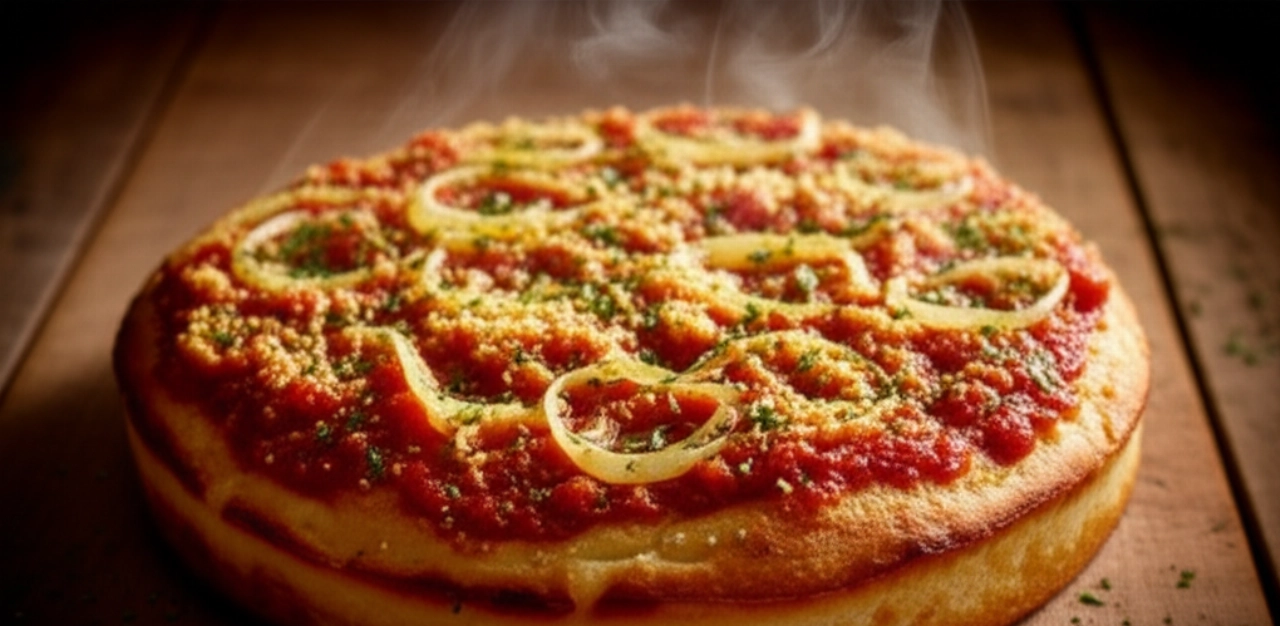
Ingredients for an Authentic Palermitan Sfincione: The Choice That Makes the Difference
For a result that will make you say "Wow!", the quality of the ingredients is fundamental. It's not just about quantity, but about the "why" behind each choice. Here's what you'll need for your perfect sfincione:
For the Fluffy Dough:
- Manitoba Flour (or strong flour): It's the key to an elastic dough capable of developing great height. Its high protein (gluten) percentage allows it to retain the carbon dioxide produced by leavening, making the sfincione incredibly fluffy and airy.
- Fresh brewer's yeast: Choose fresh, in block form. It has superior leavening power and provides a more intense and authentic aroma compared to dry yeast.
- Lukewarm water: Not hot, not cold. Lukewarm water (around 30-35°C) is the ideal environment to activate the yeast without "cooking" it or slowing it down.
- Sugar: A small amount serves to "feed" the yeast, accelerating its activation and contributing to a perfect browning of the crust.
- Salt: Essential for flavor, but it should be added away from the yeast at the beginning, as it could inhibit its action.
- Extra virgin olive oil: Gives elasticity to the dough and contributes to its final softness, in addition to imparting an unmistakable aroma.
For the Rich and Flavorful Topping:
- Tomato Passata: Choose a good quality passata, thick and sweet. It will be the base of your sauce.
- Onions: White or golden onions, finely chopped, are the aromatic base of the topping. They must be stewed for a long time to become sweet and almost melt.
- Salted Anchovies (or in oil): They are the secret ingredient that gives depth and uniqueness to the sfincione's flavor. Melting into the topping, they release an irresistible umami taste.
- Caciocavallo (or aged Sicilian pecorino): The typical cheese for sfincione, with a strong flavor that pairs perfectly with the other ingredients. If you can't find it, a good aged Pecorino Romano can be a valid alternative.
- Oregano: The scent of Sicily! Add it generously for a Mediterranean aroma.
- Breadcrumbs: Toasted in a pan with a drizzle of oil, they give a sublime crunchiness and a toasted flavor that contrasts magnificently with the softness of the dough.
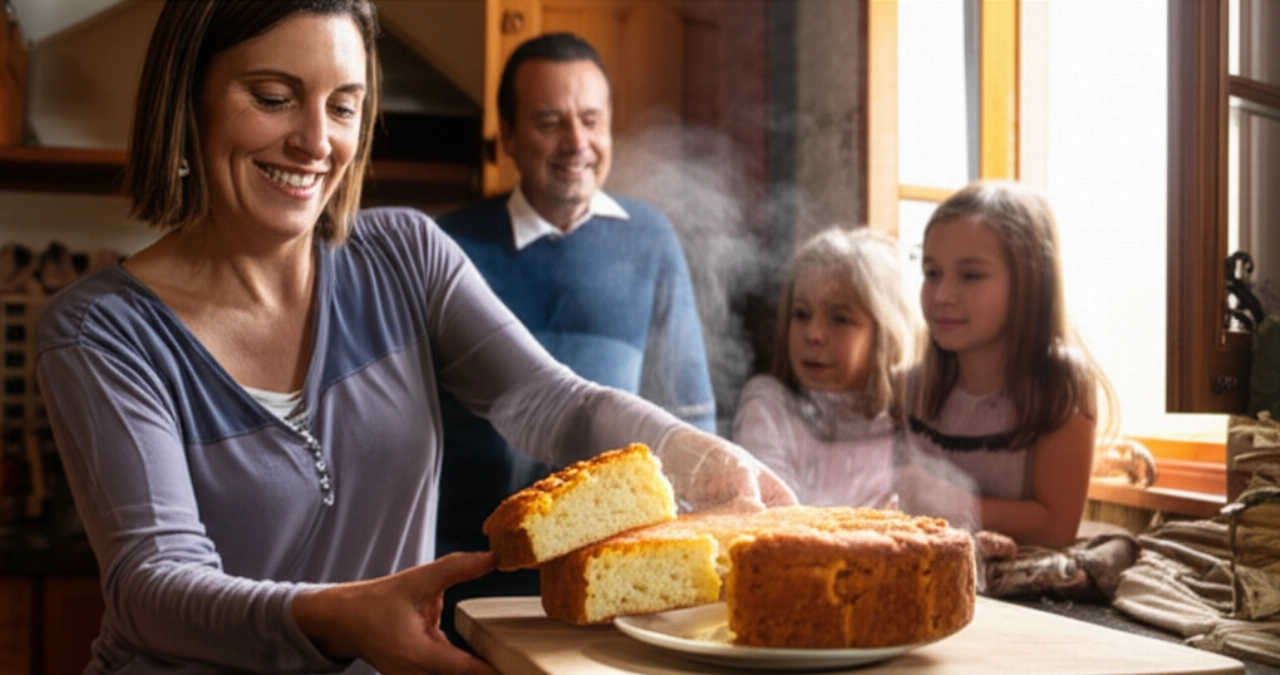
3 Common Mistakes That Ruin Sfincione (and How to Avoid Them)
Don't worry, it's normal to have doubts. But with these tips, you'll avoid the most common pitfalls that can compromise your masterpiece:
- Not respecting leavening times: Haste is the enemy of sfincione! If the dough doesn't rise enough, it will be dense and not very fluffy. Let it double in volume in a warm place without drafts. Patience is your best ally.
- Using the wrong flour: A weak flour won't develop enough gluten, and your sfincione won't be tall and airy. Always opt for a strong flour (Manitoba or W>280) to ensure the necessary structure.
- Topping too liquid or not flavorful enough: A sauce that's too watery will make the dough soggy. Be careful to let the water from the tomatoes evaporate well. Also, don't skimp on anchovies and oregano: they are what give that extra touch of authenticity!
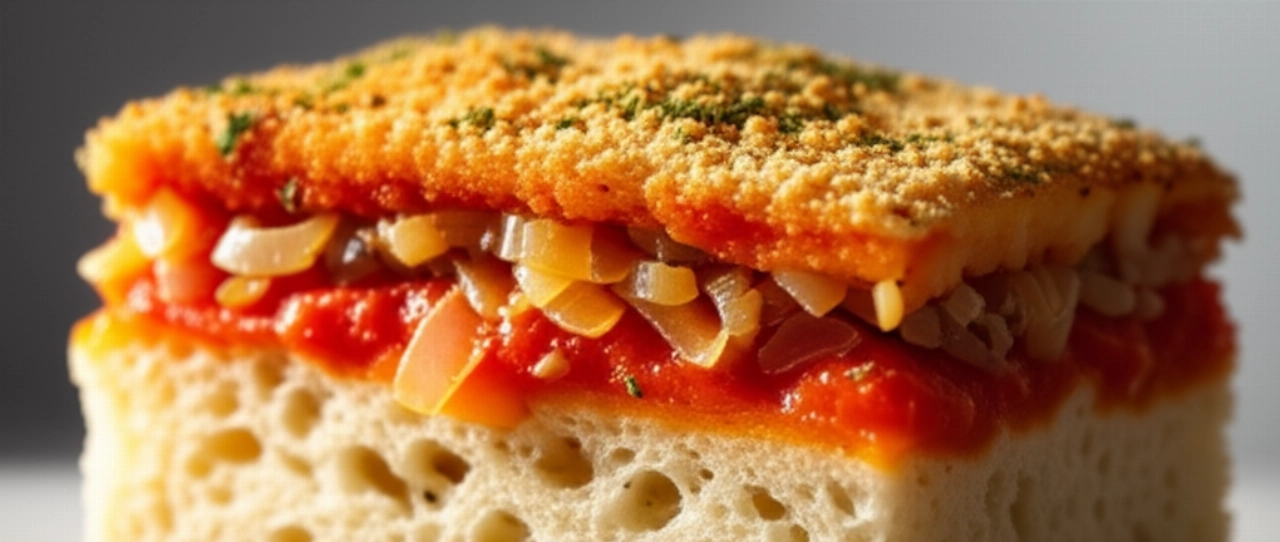
The Magic Touch: The Secret My Sicilian Grandmother Revealed to Me
My grandmother, with floured hands and a smile on her lips, always taught me that the true secret of sfincione lies not only in the ingredients but in the love and care you put into it. And then, there was that little trick few know: double proofing in the pan. After spreading the dough in the greased pan, don't top it immediately! Let it rest for another at least 30-45 minutes. This allows the dough to relax, swell further, and create those air bubbles that will make it incredibly tall and light. Only after this second rest, add the topping and bake. You'll see the difference!
Let's Prepare Palermitan Sfincione Together: The Step-by-Step Guide
Now that you know all the secrets, it's time to get your hands dirty. Follow each step carefully, and success will be guaranteed!
Ingredients:
- 500g Manitoba flour (or strong flour)
- 10g fresh brewer's yeast
- 350ml lukewarm water
- 1 teaspoon sugar
- 10g salt
- 30ml extra virgin olive oil
For the Topping:
- 500g tomato passata
- 2 large onions
- 6-8 anchovy fillets in oil (or salted, desalted)
- 200g caciocavallo (or aged pecorino)
- Extra virgin olive oil q.b. (as needed)
- Oregano q.b. (as needed)
- 100g breadcrumbs
Method:
- Activate the yeast: In a large bowl, dissolve the fresh brewer's yeast in lukewarm water with sugar. Let it rest for 5-10 minutes until a light foam forms on the surface.
- Prepare the dough: In a large bowl (or stand mixer), pour the flour. Add the water with the yeast and begin to knead. After a few minutes, add the salt and extra virgin olive oil. Work the dough vigorously for at least 10-15 minutes (if by hand) or until it is smooth, elastic, and no longer sticks to your hands. It should be soft but compact.
- First proofing: Form the dough into a ball, lightly grease it with oil, and place it in a large bowl. Cover with plastic wrap or a damp cloth and let it rise in a warm place (an oven turned off with the light on is perfect) for at least 2-3 hours, or until it has doubled in volume.
- Prepare the topping: While the dough is rising, prepare the sauce. In a large pan, heat a generous drizzle of oil. Add the finely chopped onions and let them stew over low heat for at least 15-20 minutes until they are very soft and transparent. Add the anchovies and let them dissolve in the oil with the onions. Add the tomato passata, a pinch of salt, and let it simmer over low heat for about 20-30 minutes until the sauce has thickened. Turn off the heat and add the oregano.
- Prepare the pan and second proofing: Generously grease a rectangular baking pan (approx. 30x40 cm) with extra virgin olive oil. Spread the risen dough directly in the pan, gently stretching it with oiled hands until it covers the entire surface. Don't force it if it resists; let it rest for 5 minutes and then continue. Let it rise again in the pan for another 30-45 minutes in a warm place.
- Top and bake: Preheat the static oven to 200°C (390°F). Distribute the tomato and onion sauce over the risen dough, leaving a small border free. Add the caciocavallo cut into cubes or grated. In a separate pan, toast the breadcrumbs with a drizzle of oil until golden and crispy. Distribute the toasted breadcrumbs over the sfincione.
- Baking: Bake the sfincione in the preheated oven for about 25-35 minutes, or until the edges are golden brown and the topping is sizzling. Baking time may vary depending on your oven.
- Serve: Remove the sfincione from the oven and let it cool slightly before cutting it into squares. Serve it hot or warm. It will be a triumph of flavors and textures!
Tips and Frequently Asked Questions about Palermitan Sfincione
Here are some questions you might have, with answers from your expert "grandmother":
- Can I use dry yeast instead of fresh? Yes, you can. Generally, you use 1/3 of the amount of fresh yeast. So for 500g of flour, use about 3-4g of active dry yeast. Remember to activate it in lukewarm water with sugar before adding it to the flour.
- How do I know if the dough has risen enough? The dough should double in volume. A trick is to do the "finger test": gently press a floured finger into the dough; if the indentation remains, it's ready.
- Can I prepare the dough the day before? Absolutely! You can prepare the dough and, after the first proofing, store it in the refrigerator covered with plastic wrap for a slow rise of 12-24 hours. Take it out of the fridge at least an hour before spreading it in the pan to let it return to room temperature.
- What cheese can I use instead of caciocavallo? If you can't find caciocavallo, a good aged Pecorino Romano or even smoked provola can be valid alternatives, although the flavor will be slightly different from the original.
- Why isn't my sfincione fluffy? The most common causes are flour that isn't strong enough, insufficient proofing times, or dough that hasn't been kneaded enough. Make sure to follow all steps, especially those related to proofing and flour selection.
There you have it! Now you no longer just have a recipe, but all the secrets to bring a piece of Palermo to your table, a Sfincione that tastes of home, tradition, and love. It's a dish that tells stories, brings people together, and brings a smile with every bite.
Don't be afraid to experiment. Cooking is an act of creativity and generosity. But start with this solid base, and you'll see that applause won't be lacking. The aroma that will fill your kitchen will be the first reward!
Have you tried our recipe? We're very curious to see your masterpiece! Leave a comment below, tell us how it went, or share a photo on Instagram by tagging @CercaRicette.it. If you loved this Sfincione, you can't miss our recipe for Sicilian Arancine or another classic like Pasta alla Norma. We're waiting for you in the kitchen!


